Written by Brent Huntley in ATVs
My wife would claim I am the most forgetful person there is, and this has included the unfortunate forgetting of ATV ramps. While it can be a bit panic-inducing to realize you have made it somewhere and don’t have ramps to unload and reload your ATV into your truck, it really isn’t a big deal in most situations. I had someone teach me an easy way to load an ATV and thought it was worth passing on, along with another easy way I have used when available that is easier than ramps.
How do you load an ATV without ramps? If you have an elevated surface you can just back the truck into it and drive the ATV in. If you do not have such a surface, you can pop up the front of the ATV and roll the front wheels onto the tailgate before lifting the back end.
These methods sound pretty easy, and they are, but you are dealing with a heavy piece of equipment and there are some things that go wrong. We want to make sure you get your ATV to the trail for an awesome day of riding with no damage to your truck, your ATV or your body, so we detail out the processes step-by-step below. You may also want to check out our guide for nearly every truck bed to see how well your ATV will fit.
Lifting the ATV End by End
This method requires you to do a fair amount of heavy lifting. How heavy depends on the weight of your ATV. If you are getting up around 500cc or higher with a utility ATV like the Polaris Sportsman (pretty consistently the heaviest model in its cc class I could find). If you have a lighter sports model, even something like a 700cc Yamaha Raptor, and this should work great for you. Even a 300-400 pound quad may sound heavy, but it isn’t bad since you only lift one side at a time.
To lift your quad into a truck bed, just follow these detailed steps exactly to keep your ATV, truck and body safe.
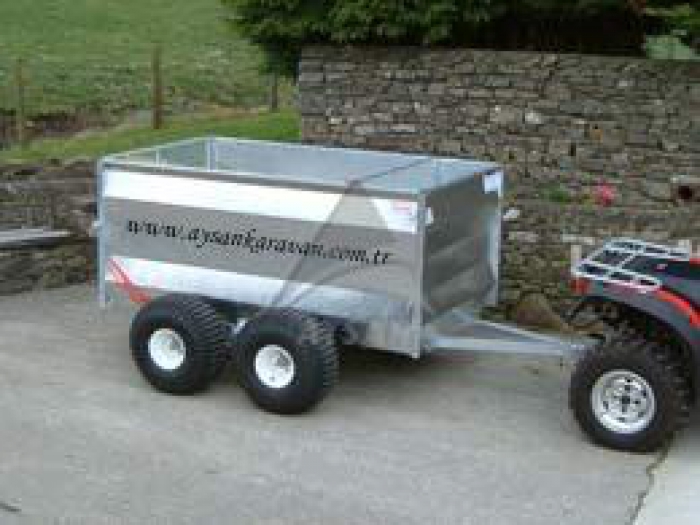
 Make sure you lift with your legs and keep your back straight.
Make sure you lift with your legs and keep your back straight.That may have seemed like a lot of steps, but it shouldn’t take you more than a few minutes to easily get your ATV in your truck bed, if it isn’t too heavy, without the use of any ramps.
This may not be an option for everyone, but it makes it really simple to load an ATV into a truck bed if you have some kind of elevated surface to back your truck into. This could be a hill, a slanted driveway, a loading dock or many other things.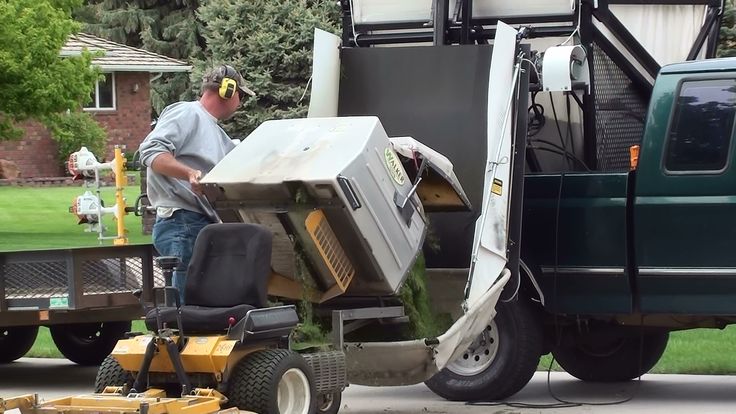 My house as a kid had a nice irrigation ditch in the front that worked well as we could drive an ATV from the yard right into the bed of a truck that had been backed into the ditch. To use this method, just follow these easy steps.
My house as a kid had a nice irrigation ditch in the front that worked well as we could drive an ATV from the yard right into the bed of a truck that had been backed into the ditch. To use this method, just follow these easy steps.
Something to keep in mind, if you have an elevated surface that doesn’t reach high enough for you to drive the ATV into the truck bed, is that you can use the method above to lift your ATV into the truck bed from an elevated position and it will make it a whole lot easier on your knees, arms and back.
How to Unload without RampsUnloading an ATV without a ramp is a little scary the first time you try it, but it is really easy and fast.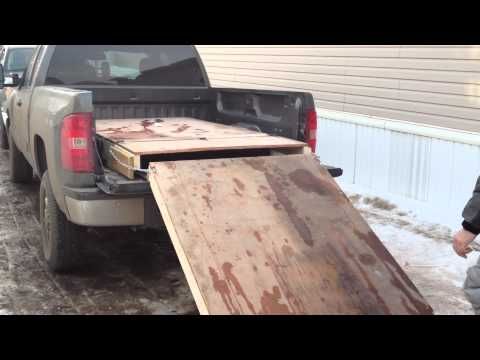 Once again, the lighter your ATV, the easier this is going to be. Just pull it from the back grab bar. Pull it straight back, holding up the back end until the front tires reach the end of the truck bed. Then give it a little jerk so the front end clears the tailgate. Prepare yourself for a little bounce backward when the tires hit the ground.
Once again, the lighter your ATV, the easier this is going to be. Just pull it from the back grab bar. Pull it straight back, holding up the back end until the front tires reach the end of the truck bed. Then give it a little jerk so the front end clears the tailgate. Prepare yourself for a little bounce backward when the tires hit the ground.
Yes, you still should have ramps and use them whenever possible. Ramps are going to be the safest and easiest way to load an unload an ATV, and should be useable in any conditions.
Picking the right ATV ramps is not an easy task as it is going to depend a bit on your personal preferences and your hauling vehicle. Some people swear by a single piece ramp (as opposed to two tracks). These tend to be a bit safer and easier to use and are great for beginners. I personally don’t love them because they tend to be a little steeper and bulkier. Here is an example of a great tri-fold single piece ramp as an example.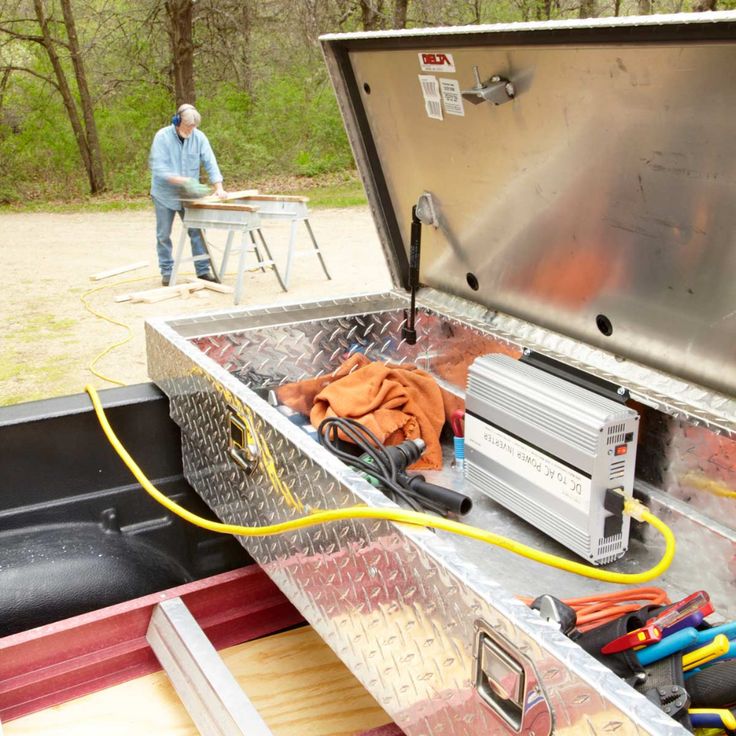
I personally prefer the ramps in our recommended gear because they are a bit cheaper, very sturdy and have arches so it easy to drive the ATV into the truck bed without accidently gassing it into the rear window of the truck.
Some considerations to keep in mind as you are buying and using ramps are below.
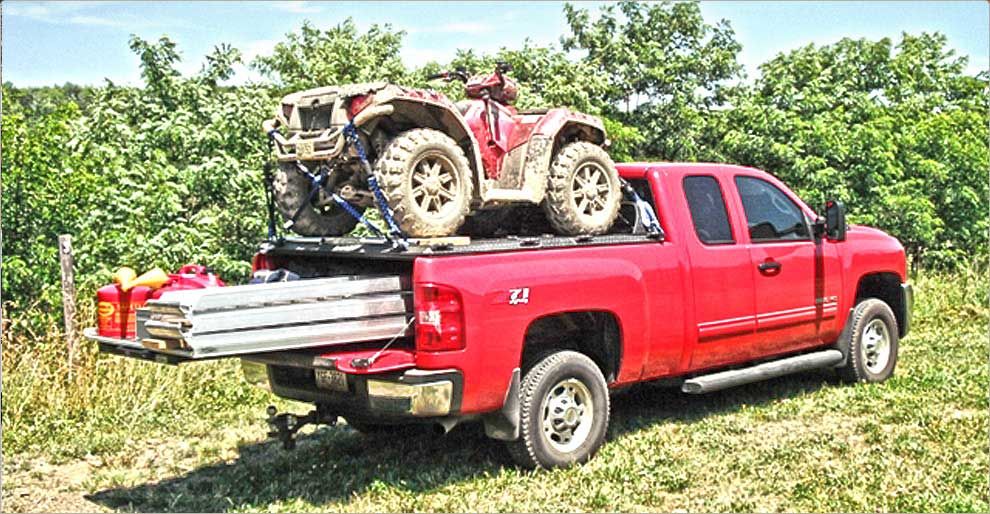
That’s it. There really isn’t much to loading an ATV, but it probably leads to nearly as many accidents as actually riding. Get some ramps and follow these tips, but don’t despair if you don’t have ramps. You can easily load the ATV even without ramps. Just make sure to do so safely.
My New Favorite Accessory for Winter Riding
Over the past several months, as the weather has gotten cooler, I have been testing out the Venustas Heated Vest for my cold-weather photography. I wrote all about it over at Photography &...
I wrote all about it over at Photography &...
Continue Reading
link to How To Use An ATV SpreaderHow To Use An ATV Spreader
One of the greatest things about summer is yard work. As the heat and humidity rise, so do the plants and flowers. The advent of technology has made seeding and fertilizing, a job that used to...
Continue Reading
atv loading atv tips atv transport step by step guide utv loading utv tips utv transport
Transporting your ATV or UTV can be a pain. One of the easiest ways is to secure it in a truck bed, but it can be challenging to get it on the truck in the first place.
Using a ramp is an easy and quick way to load and unload, but there are still safety precautions you must follow to ensure you and the vehicle are not injured. Here is a step by step guide.
Step 1: Purchase Quality Ramps
Get yourself a set of proper, high-quality loading ramps with added safety features like sidewalls.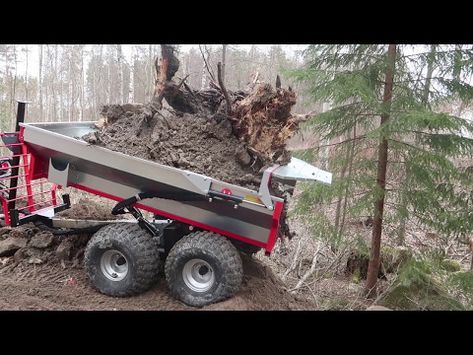 Your ramps should be rated for the weight of the vehicle plus the driver. Never exceed the weight limit on your ramps.
Your ramps should be rated for the weight of the vehicle plus the driver. Never exceed the weight limit on your ramps.
Step 2: Secure the Ramp
Use tie-down or ratchet straps to secure the ramps to the truck to prevent slipping or sliding when you’re driving up them. Use a separate strap for each ramp, and secure to the truck’s frame.
Step 3: Strap on That Helmet
The slow speed and short distance traveled when loading an ATV may seem innocent, but if something goes wrong, you want your important assets--that big brain and dreamy face--to be protected! Don’t let seeming convenience, peer pressure or your ego get in the way--make sure your help is on and the chin strap is secured.
Step 4: Find the Proper Positioning
Line up the ATV’s wheels with the truck, making sure it is dead straight on.
Step 5: Find the Center Line
Position the ramps so they are lined up with the very center of the ATV’s tires, or as close as possible.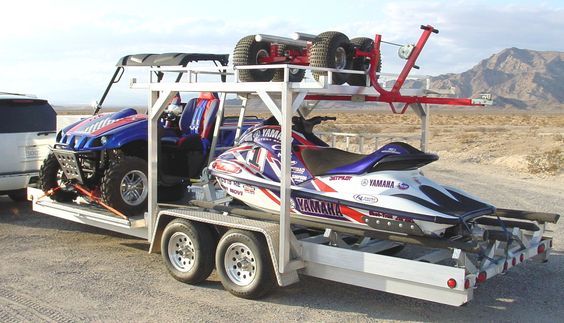 If you get them off-center, there is a risk that the ramps will tip and/or you will drive the ATV clean off the side.
If you get them off-center, there is a risk that the ramps will tip and/or you will drive the ATV clean off the side.
Step 6: Pick the Right Gear
Put your ATV into 4LO or whatever the lowest possible gear is. You want low speed, but high power, and if you have four-wheel drive, you want it active.
Step 7: Keep it Firm but Smooth
Apply throttle firmly but smoothly. You want just enough gas for momentum and no more. Absolutely do not back off the throttle while driving up the ramps, as you might slip backwards.
Step 8: Practice Slow Creep
Slowly creep the ATV until all four wheels are safely on the truck bed. Once here, gently apply gas until the front of the ATV nearly touches the front of the bed, with a few inches space between the ATV and the front of the bed/cab window. Then shut off the engine, and put in park or apply the parking brake. Do not leave the key in while transporting.
Step 9: Pack It Up
Remove the tie-down straps, remove the ramps and close the tailgate.
Step 10: Secure the ATV
Use strong ratchet straps to secure the ATV to the truck. It helps to have somebody sit on the front and back of the machine while you secure the straps.
Never attempt to load an ATV on a truck on your own. If anything goes wrong, you may need a second person to fix the problem or go for help. Following these simple steps will help to keep the loading process smooth and safe.
ATVs are designed for driving on difficult tracks. On their own, they are not able to move along the highway for long distances, because the quadra has a large suspension travel. If you plan to ride away from home, the first thing you need to decide is how to transport the quad bike to the ride location. There are several ways to transport motorcycles. Each of them has its own advantages and disadvantages. When choosing the best option, it is important to consider the distance between the start and end points. nine0003
nine0003
If you need to transport the ATV over a short distance, you can use a private car or use the services of a transport company. But sometimes you have to transport equipment hundreds of kilometers away. In such cases, ATV owners are more likely to opt for the services of professional carriers. It is risky and dangerous to transport bulky cargo on your own.
Transporting an ATV with a trailer is the best option for those who need to transport equipment over any distance. This is a universal solution that allows you to conveniently transport children's, utility, sports ATVs. But keep in mind that not every trailer will fit. It should be a full-fledged loading platform that allows you to securely fasten the vehicle. The maximum speed of a car with a trailer is 70 km/year, in a built-up area – 60 km/year. nine0003
A trailer for transporting an ATV can be made by hand or purchased ready-made. There are craftsmen who independently make platforms for transporting two ATVs. The work is quite difficult. It is necessary to prepare drawings, sketches, purchase materials. In addition, a homemade trailer must be registered. This will also have to be dealt with.
There are craftsmen who independently make platforms for transporting two ATVs. The work is quite difficult. It is necessary to prepare drawings, sketches, purchase materials. In addition, a homemade trailer must be registered. This will also have to be dealt with.
It is much easier and faster to buy a ready-made trailer. For the transportation of ATVs, platforms of different types are used. nine0003
 nine0020
nine0020 When choosing a trailer, consider the distance over which you will need to transport equipment, the design features of the ATV, as well as your financial capabilities.
To transport a vehicle from one place to another on a trailer, you first need to secure the ATV. Driving safety depends on this. Fixation with belts for wheels, the seat is not reliable. For proper fastening, you will need two ratchet straps. The work should be done in the following sequence: nine0003
This method is reliable and convenient, allows you to carefully drive an ATV for any distance. Such fixation will not harm the winch or the seat. The wheels do not slip, motor vehicles do not shake the trailer while driving. If the ATV is not fixed or fixed incorrectly, this can lead to a deterioration in its performance, damage to important components and mechanisms. nine0003
If the ATV is not fixed or fixed incorrectly, this can lead to a deterioration in its performance, damage to important components and mechanisms. nine0003
Do you have a private car? Why not use it to transport an ATV? A light model (sedan, station wagon, hatchback, etc.) is not suitable for this purpose, since the dimensions of the cargo are quite impressive. Motorcycles simply will not fit in the luggage compartment of such cars. You can transport ATVs in minibuses and pickups. First, the vehicle must be loaded, secured in the body, check the reliability of fixation. nine0003
There are plenty of companies in Russia that provide cargo transportation services. Transport firms, evacuation services, even private individuals – there is one to choose from. In certain cases, their services are beneficial to the client. ATVs are transported on tow trucks, semi-trucks and cargo vans.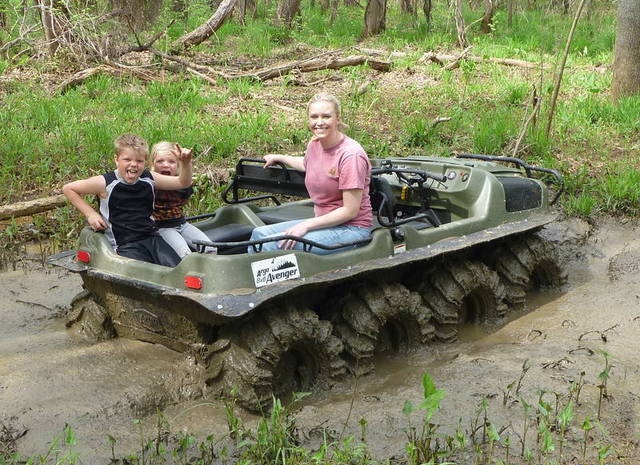 When seeking help from the evacuation service, certain nuances should be taken into account.
When seeking help from the evacuation service, certain nuances should be taken into account.
For one-time transportation over a short distance, a tow truck can be used. But if you have to transport vehicles hundreds of kilometers away, it is better to give preference to another method.
A very good solution is to contact a company that deals with cargo transportation. This option is relevant if you bought equipment in another city, and it makes no sense to drive a personal car after it. Such organizations have their own fleet of vehicles. The machine is selected depending on the dimensions of the ATV. For transportation of motor vehicles can be used: nine0003
The choice of a transport company also needs to be approached carefully. A reliable contractor is ready to take on all obligations related to the delivery of motorcycles. Such organizations operate under an agreement that specifies the terms of cooperation, prices, terms, responsibilities of the parties, etc. nine0003
Another advantage of using a transport company is turnkey work.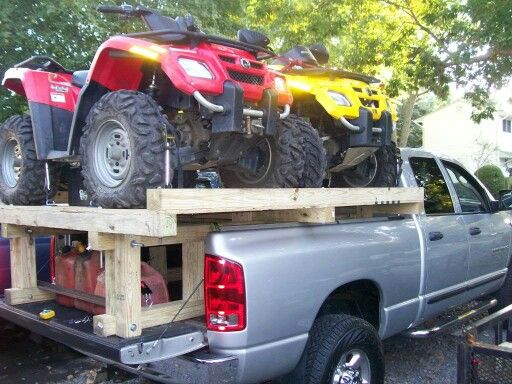 Specialists work out routes in detail, select a platform for a specific model of motor vehicles, notify the user about the movement of cargo.
Specialists work out routes in detail, select a platform for a specific model of motor vehicles, notify the user about the movement of cargo.
No documents are required for the transportation of motorcycles in Russia. It is only important to prove that the ATV is yours. Take with you the contract of sale or donation for this. No insurance or license required. If you are importing a vehicle from abroad or exporting it outside the country, check if the ATV is equipped with license plates. A certificate of registration is also required. nine0003
So, we have considered the most common ways of transporting ATVs over short and long distances. For transportation of motorcycles, you can use:
The most rational solution is to use a trailer.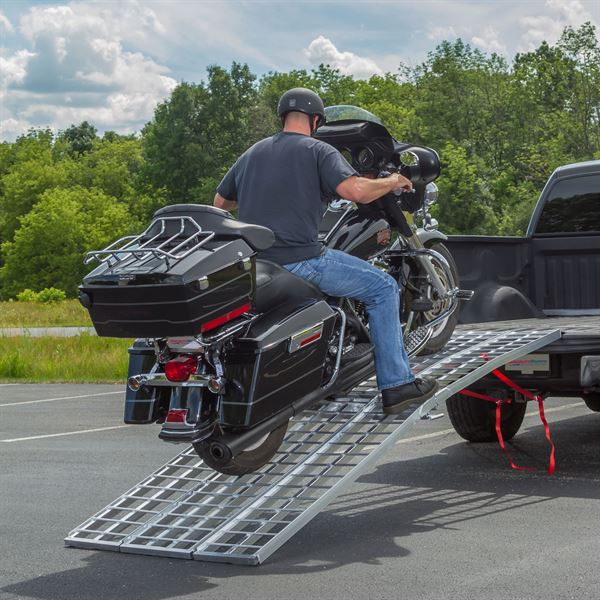 If you don't have it, buy it. There are many great deals. This device is sure to come in handy in the household. With it, you can transport crops, building and finishing materials and, of course, motor vehicles. nine0003
If you don't have it, buy it. There are many great deals. This device is sure to come in handy in the household. With it, you can transport crops, building and finishing materials and, of course, motor vehicles. nine0003
How to transport an ATV? Which trailer to choose for this? How long does it take to load/unload an ATV?
Often the driver is faced with the task of transporting an ATV, for example, to take walks through the expanses of our Motherland that are impassable for ordinary transport. The best option for delivery to your destination is a light trailer. nine0006 However, to begin with, it is worth knowing how to properly transport, as well as how to load or unload an ATV.
Let's consider this procedure on the example of the Universal trailer with the index "A", which means "wide".
As accessories the trailer uses:

The advantages of the trailer include a spring type of suspension with a suspension sprung, which allows you to maintain a smooth ride and stability of the trailer on the road in any load range. nine0003
It should be noted that the station wagon tarpaulin 8213 05 is equipped with a side door, which facilitates the process of refueling equipment directly in its body.
Procedure for transporting an ATV onto a trailer:
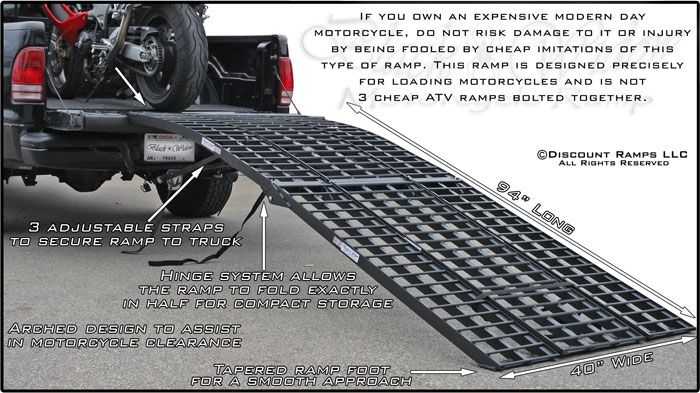
So, the time spent on loading is 5 minutes .
To unload the ATV at your destination, you will need:
As we see on the example of the Kurgan trailers, the operation of special equipment does not cause any problems . Delivery to the place of operation, loading and unloading is fast and convenient.
Delivery to the place of operation, loading and unloading is fast and convenient.
The presented video clearly shows how the ATV is loaded and unloaded onto the trailer.
We wish you successful and unforgettable trips on the ATV. nine0006 If you want to discuss the article or express any wishes, then you can leave your comment below.
If you are interested in the directions: home-made ATV, ATV with your own hands, home-made, ATV based on the Urals - base - Ural motorcycle, wheels - from Gazelle - you can find a lot of useful information in the section: Homemade ATVs of our Photo Album.
You can see more ATV from the Urals Here. nine0003
All categories of the section are in the column on the left. Enjoy watching!
—>
See other materials on the topic, or go to the comments at the bottom of the page:
Unusual arrangement of the rear wheels in pairs gives a brutal look to the ATV.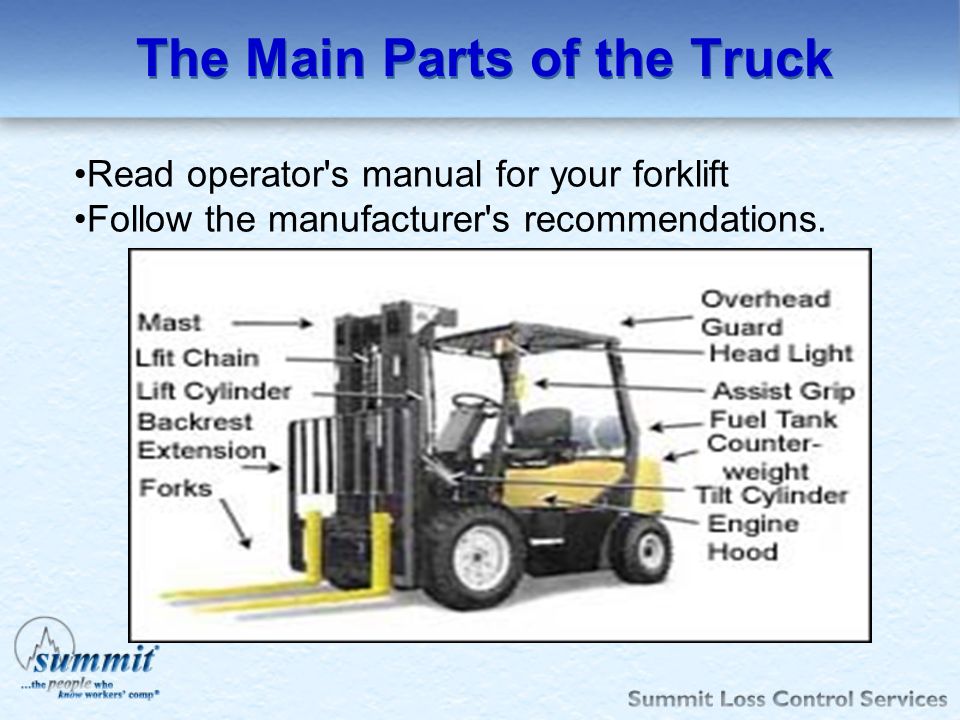 The engine power is enough to transport a trailer with a load of up to half a ton, and an empty ATV on asphalt from the start is capable of wheel slip —>. Read more , or Go to homepage
The engine power is enough to transport a trailer with a load of up to half a ton, and an empty ATV on asphalt from the start is capable of wheel slip —>. Read more , or Go to homepage
Do not miss similar materials:
Ural, wheels - from the Gazelle - please go to the category of the section you need.
In any case, if you add photos or any other interesting materials: diagrams, drawings or descriptions - visitors who are interested in « self-made / self-made ATV, DIY ATV, homemade, ATV based on the Urals”, will remain grateful to you.
No matter where you intend to go: to the workshop, on a remote track or wild forests, one way or another, you will have to load your ATV on a trailer or truck.
Loading an ATV into the back of a truck seems so easy that any advice on the subject can be met with just as much backlash as criticism of your driving style. The only problem is that at least once in a lifetime, each of us went with a bad driver and saw an ATV miraculously held in the back of a trailer. nine0003
The only problem is that at least once in a lifetime, each of us went with a bad driver and saw an ATV miraculously held in the back of a trailer. nine0003
There are two points of view as to where on an ATV the straps should be fastened. Some people think that they should be placed above the pivot point of the suspension, for example, at the high point of the frame. Others are of the opinion that the belts should be fixed below the suspension - on the frame, tow hook or footrest. Drivers and racers argue about this issue, it is discussed on forums and even described in different ways in the user manuals of different manufacturers.
Some riders believe that if you fasten the belt high on the ATV and then tighten it enough to compress the suspension, it will hold the machine in place in the bed and prevent it from moving. For example, if you compress the suspension 2 inches, steady pressure on the belt will keep your ATV in place. In addition, this design gives some margin, because even if the belt loosens, it will be able to hold the car in place until the suspension returns to its original position.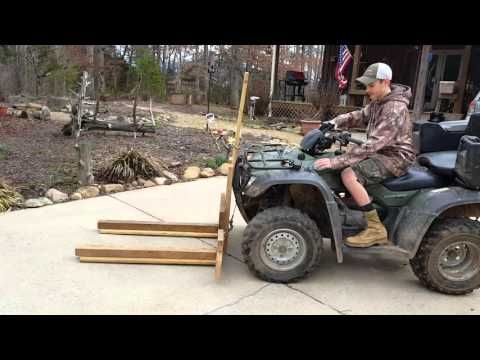 nine0003
nine0003
Another benefit of having a high harness is that you can use your own weight to compress the harness and tighten the straps.
Others say that if you fasten the belts high up on the frame, they will immediately loosen when your truck hits a bump. A low belt mount will keep the ATV from rolling in the trailer, holding its wheels in place, and at the same time allow the rest of the machine to move independently of its wheels. In addition, in this position, the belts are less likely to loosen. If this does happen, there will be less pressure on the belt than if it were attached to the top of the car over a compressed suspension. nine0003
Whichever method of fastening you prefer, choose good quality fastening straps and tighten them well. The number of belts also matters. Some drivers think that two belts (front and back) should be enough. However, they do not take into account the fact that if one of the belts breaks, the ATV will be free.
Therefore, the best option is to secure the machine with four straps in opposite corners.
But even if you carefully plan where you will mount your ATV, all your efforts can go to waste if your belts are torn or worn. If you don't want your car to end up in a ditch upside down, don't skimp on belts. nine0003
There are many companies around the world making lashing straps, so it's hard for us to say which one is the best. But do not forget that most often in this case the price corresponds to the quality.
It's better to pay $40 for a pair of belts from a well-known manufacturer, with a large and strong weave and quality metal buckle and hooks. Also, be sure to read the belt information to make sure it can support the weight of your ATV.
Another important decision regarding bindings is the choice between girths and ratchet straps. The former are usually much smaller and simpler, can be used in confined spaces, but are difficult to tighten tight. The second ones are more massive and difficult to use, although they are much easier to tighten. They are also more prone to performance problems due to misuse. nine0003
nine0003
So, you have quality belts, and even determined exactly where you will fasten them on the ATV. Now is the time to think about how long you've been taking care of your trailer. First, check how the wheels spin - they should spin freely without making any noise. They also need to be firmly in place. Lubricate and treat bearings if necessary.
Don't forget to check the tires too. They must be intact, without cracks and punctures on the tread and side walls. Inflate them to the correct pressure and check that the nipples are tightly wrapped. nine0003
In addition, check the condition of the tow hook and safety chains. When connected to the lead machine, they should sag a few inches.
I have a CFMOTO CF500-A carbureted ATV. Starting the engine in winter in frost is a little more difficult than on injection technology. In particular, you need to manually close the throttle to enrich the air-fuel mixture, otherwise the ATV will not start.
But even a damper does not always help. You approach the ATV after a frosty night, turn on the ignition, press the engine start button... So you can try to start indefinitely. The problem is in the cold and in a weak ignition system. At -20°C, even with a new spark plug, starting the engine is very difficult, as the carbureted ATV's capacitor ignition (CDI) system produces a very weak spark, unable to ignite the fuel-air mixture. It will not even help to connect a start-booster, because the problem is not in the battery. nine0003
There is a radical way - to replace the entire system with an advanced one with a normal ignition coil, and not a capacitor. But I'm not that brave. Therefore, in severe frosts, I start my ATV in a different way, and very simply.
I take a technical hair dryer.
I put it on the right under the wing so that it blows on the engine. You just need to make sure that the hair dryer is not touching anything, and there are no wires in the way of hot air either.